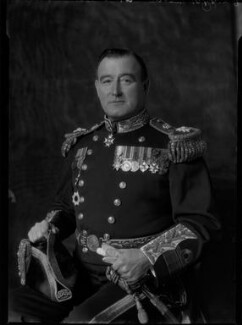Percy Addison facts for kids
Quick facts for kids
Sir Albert Percy Addison
|
|
|---|---|

Admiral Addison in November 1927.
|
|
| Born | 8 November 1875 Southsea, Portsmouth |
| Died | 13 November 1952 (aged 77) New Forest, Hampshire |
| Allegiance | United Kingdom |
| Service/ |
Royal Navy |
| Years of service | 1889–1929 1939–1946 |
| Rank | Admiral |
| Commands held | Destroyer Flotilla, Mediterranean Squadron (1924–26) HM Australian Fleet (1922–24) 9th Submarine Flotilla (1917–19) HMS Maidstone (1917–19) HMS Dartmouth (1915–17) HMS E52 (6) (1917) HMS Bonaventure (1909–10) HMS Hazard (1906–07) |
| Battles/wars | First World War Second World War |
| Awards | Knight Commander of the Order of the British Empire Companion of the Order of the Bath Companion of the Order of St Michael and St George Mentioned in Despatches Chevalier of the Order of the Légion d'honneur (France) Croix de guerre (France) Military Order of Savoy (Italy) Order of the Rising Sun (Japan) |
Admiral Sir Albert Percy Addison (born November 8, 1875 – died November 13, 1952) was a very important officer in the Royal Navy. He was known for his leadership and knowledge of submarines. During the First World War, he was considered an expert on these underwater ships.
From 1922 to 1924, he was the leader of the Australian Fleet. This was a big responsibility, showing how much trust the Navy had in him.
Contents
Albert Percy Addison joined the Royal Navy on July 15, 1889, as a young naval cadet. He worked hard and moved up the ranks. On March 14, 1895, he became a sub-lieutenant. Then, on June 22, 1897, he was promoted to lieutenant.
He received special training in torpedoes. Torpedoes are underwater weapons used by ships and submarines. In January 1901, he served as a torpedo lieutenant on the large warship HMS Victorious. This ship was part of the Mediterranean Station, which means it operated in the Mediterranean Sea.
After serving on another ship, HMS Mercury, he continued to advance. He became a commander on December 31, 1907. Later, on June 30, 1913, he was promoted to captain.
World War I Service
During the First World War, Captain Addison showed great bravery and skill. He commanded the ship HMS Dartmouth.
Battle of the Otranto Strait
On May 14, 1917, HMS Dartmouth was involved in a chase and battle. They were pursuing Austrian ships that had attacked Allied ships in the Strait of Otranto. The next day, May 15, 1917, HMS Dartmouth was hit by a torpedo from a German submarine called UC-25. Even though his ship was damaged, Captain Addison managed to bring it safely back to port. This was a very difficult task and showed his excellent leadership.
Submarine Command and Success
Later, Captain Addison commanded a submarine himself, HMS E52. On November 1, 1917, he led an important mission. His submarine successfully sank another German submarine, UC-63, near Goodwin Sands in the Dover Straits.
For his brave actions during the First World War, he received several important awards. These included the Chevalier of the Order of the Légion d'honneur and the Croix de guerre from France.
Director of Torpedoes and Mining
From April 1920 to March 1922, Captain Addison held a very important job. He was the Director of Torpedoes and Mining. This meant he was in charge of all torpedoes and naval mines for the Royal Navy. His expertise in these areas was highly valued.
Post-War and Later Career
On April 30, 1922, he became the Rear Admiral Commanding His Majesty's Australian Fleet. He held this position for two years, until April 30, 1924. During this time, he was promoted to rear admiral on November 2, 1923.
After his time with the Australian Fleet, he commanded the Destroyer Flotilla of the Mediterranean Squadron. This was another key leadership role. He continued to receive honors for his service, including being appointed a Companion of the Order of the Bath in June 1924 and a Knight Commander of the Order of the British Empire in June 1931.
From 1928 to 1937, he served as the Director of Dockyards to the Admiralty. In this role, he oversaw the naval dockyards where ships were built and repaired.
Retirement and Second World War
Admiral Addison first retired from the Navy on March 1, 1929. However, when the Second World War began in September 1939, he was called back to duty. He served again during the war, showing his dedication to his country. He finally retired for good in April 1946. Sir Albert Percy Addison passed away on November 13, 1952.

